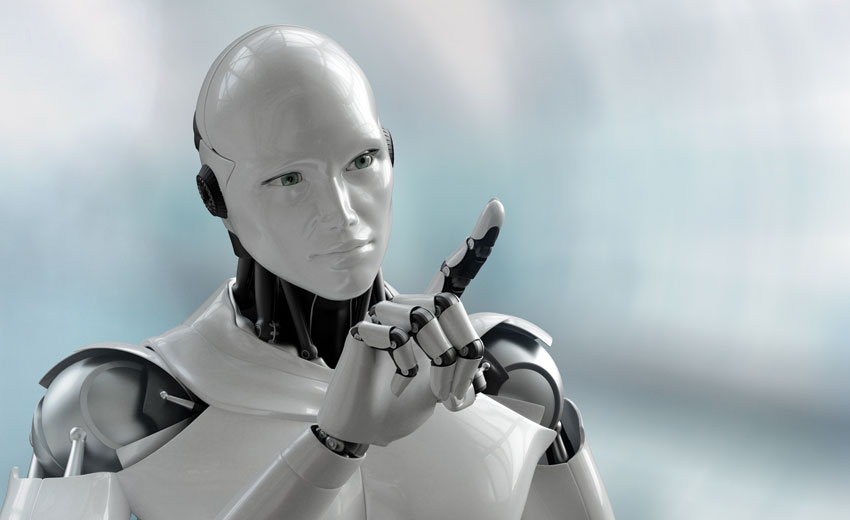Mr. Smart: By Dr. Raghavendra Rao
Professor Sekhar was well known among scientific circles who specializing in robotic artificial intelligence. His published papers in reputable scientific journals paved the way for accurate diagnosis of diseases and algorithms for cancer treatments. Of late, the National defense Department expressed an interest in his robots with artificial intelligence, human emotions and in their discriminative capacity.
If you visited the professor’s research room, you’d be surprised. It was chaotic as a tempest had passed through. Wires, computer chips, laptops and printouts were scattered all over the room. Paper cups with dried rims of coffee at the bottom, lay on the floor. Robots, male and female, in various stages of development, stood in a separate room. Because the Professor worked long hours, he had a bed at one corner of this room for relaxing. As the research was highly classified, only the professor and a young MIT graduate assistant, Mr. Robert, AKA Bob, had access to the room.
The professor’s favorite was Mr. Smart, a robot imbued with speech, acute vision and hearing, and rudimentary feelings of right and wrong. Dr. Roy, a Chief Scientist in Robotics at the Defense Institute in Washington, heard about Professor Sekhar’s research and wanted to test Mr. Smart’s capabilities. The defense department had use for such robots. They could function as intelligent soldiers, distinguish foes from friends, spare children in combat, and rescue fellow wounded ones in the battle fields. The professor was proud of Mr. Smart and respected him like a human. When Dr. Roy called the professor and requested to see Mr. Smart, the professor was worried how Mr. Smart would behave because he had feelings, such as, fear, shyness and anger.
The day of reckoning arrived. Mr. Smart, wearing a dark-blue suit, hat and sunglasses entered the hall accompanied by the Professor and occupied a chair on the stage. Dr. Roy was already there with his assistants. The hall was filled with students from MIT and specialists in artificial intelligence. Silent anticipation pervaded the hall.
After the Professor had introduced the dignitaries, Dr. Roy said, “Professor Sekhar, please allow me to talk to the robot without anyone interrupting me. I want to assess the depth of his emotional knowledge.”
“Dr. Roy, Please note. I’m not a robot. I’m Mr. Smart.”
The visitors clapped.
“Mr. Smart, how are you? Are you comfortable talking to me?” Roy said with a broad smile.
“Thank you, Dr. Roy, I’m fine. I know I should reply you with a smile, but the techs haven’t fixed my zygomaticus major and levator labii superioris, so I can’t smile like you.”
“That’s fine. Don’t worry. You look sharp in your blue suit.”
“Literally, I’m not sharp. Figuratively, yes.”
The audience burst into a laughter.
“O, my, you’re intelligent. Your professor informed me you learn new facts every day. I’m curious. Tell me what you learned over the past 24 hours.”
“A whole new world opened up for me. At 10 o’clock last night, the door to the research lab slowly opened. Because of my night vision I could see clearly. It was Robert who assists the Professor. Then, hesitantly, a young female entered the room. I didn’t know her. She was beautiful.”
“How did you figure out she was pretty?”
“I measured by my built-in scale inside my eyes her facial length and width, and calculated the ratio, which was 1.62. That measurement signifies a woman’s beauty.”
“Then what happened?”
“How did you manage to sneak out?” Bob asked.
“Easy, good old pillows under the blanket technique.”
“What is it, Mr. Smart?” Dr. Roy asked.
“It is an escape technique by teens to sneak out of the house, or a dorm, to dupe the parents or warden. Not foolproof. You know it. You’re testing me.”
“Yes, I did. That’s how I saw all the Batman movies. Now, what else did you learn last night?”
“I learned a couple of verbs and how to use them.”
“Go on.”
“You’re so beautiful,” Bob said. “He went near the female and tightly put his arms around her torso. Then he applied his lips against hers and said, ‘You’re so sweet.’ I checked in Merriam Webster’s Dictionary and learned what kissing and hugging is. Then I referred Best and Taylor Physiology book. Saliva doesn’t taste sweet.”
The audience burst into laughter.
“Then?”
“My sensitive faculties detected a raise in their blood pressure, rapid heartbeats and rocketing dopamine and serotonin levels. These are pleasure hormones. Bob whispered, ‘I love you.’ He grabbed her hand. ‘I can’t wait any longer. Let’s go into the other room.’”
“’Let go off my hand, Bob. I want to go home,’ said the woman.”
Professor Sekhar intervened. “Mr. Smart. That’s enough. Don’t say anymore. Stop talking.”
“Professor, listen.” Dr. Roy said. “If I know the full capability of your creation, how Mr. Smart would behave now, I can recommend you for the defense grants for further research.” He paused. “What do you say?”
The Professor looked at Mr. Smart. “All right. Go on.”
Mr. Smart resumed talking.
“Stop” I shouted. “Bob, what you ask is not moral according to my professor’s teachings. Please go out.”
“You’re just a machine. What can you do? I can deactivate you.”
“Bob, I already transmitted what had happened here to the professor’s personal computer at home. If you don’t go, like a bouncer, I’ll throw you out. If you touch me, I’ll break your neck.”
“Bob’s face turned pale. He silently walked out.”
“I looked at the young woman who was crying. I asked her name. ‘Kavya,’ she said. I told her to go home and never show her face at the research room again.”
* * *
That night, professor Sekhar had a lot to discuss about values to his daughter, Kavya.


